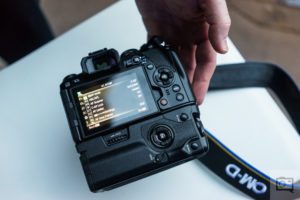
To get the most out of your camera, it’s essential to be confident with both your automatic and manual modes. Your basic camera settings all work together to ensure that the correct amount of light reaches your camera sensor to balance your exposure.
You can either choose to prioritise a certain setting in your automated options, or control them all yourself in manual.
Exposure is mainly comprised of three main components: aperture, shutter speed and ISO. These work together in order to get a close to the perfect exposure as possible and are often shown in an exposure triangle like this one.
Exposure Triangle
If you set your camera to manual, you can adjust all of these yourself or, if you use your aperture or shutter speed priorities, you set the value for one, and the camera will figure the rest out for you. So, what do these settings do?
Aperture
Aperture priority mode is usually an ‘A’ or ‘Av’ on the dial at the top of your camera and the aperture setting is shown by an f/ number. In aperture priority mode, you set the value for aperture and your camera will balance your exposure for you.
For portraits, you want this number to be as low as you can. This will give you those lovely, blurry backgrounds behind your subjects - also known as ‘shallow depth of field’. For landscapes, you want as much in focus and as little blurred out as you can, so you will use a high number.
In this image, you can see that more and more stays in focus as the aperture number gets higher.
Aperture
By setting your camera to aperture priority, you prioritise aperture as a setting, so if you want blurry backgrounds, set your camera to a low f/ number and these will be consistent throughout your shots.
Although aperture has a large impact on the aesthetic of a shot, it also controls the amount of light getting to your sensor. Inside your camera lens there are blades that move in and out, much like the pupil of your eye. When you need to let lots of light in (numbers like f/1. 8) these blades move to create the biggest hole and allow light in, much like when your pupils go very wide in the dark. Conversely, when there is lots of light, they move together (numbers like f/22), to create the smallest hole, like when your pupils go very small on a sunny day.
So, for a brighter shot, use a wider aperture (lower f/ number), or a darker shot, use a narrower aperture (larger f/ number)
Shutter Speed
Shutter speed priority is usually an ’S’ or a ‘Tv’ on the dial at the top of your camera. If you want to prioritise your shutter speed setting, use shutter priority, which allows you to set this value yourself and the camera will control the rest of the settings for you.
In terms of aesthetic, your shutter speed can have some very dramatic effects. It will change whether your subjects are completely crisp or blurred.
Shutter speed
As you can see from this image, not only do the subjects get more blurred as the shutter speed gets longer, but the shot gets much brighter too. When using long shutter speeds, it’s often worth using an ND filter in order to darken your shot and allow you to leave the shutter open for a much longer time. Long shutter speeds can be great for shots at night or to make running water look misty and dreamy.
ISO
You can either leave your ISO on auto, or adjust it manually. ISO increases how sensitive your shutter is and therefore, how much light it picks up from the outside. This enables you to brighten your shot without having to adjust the aperture or shutter speed. The higher the number, the more light it will pick up, however this will also increase the amount of grain in your shot.
A good general rule of thumb is to keep your ISO low, in order to get the highest image quality you can from your camera.
Manual Mode
When using manual mode, it’s a fine balance of adjusting these settings to correctly balance your exposure. You need to stay mindful of the impact each one will have on the others
Starting to understand how all these settings work together will be a great platform for you to control more aspects of your shot and really begin to understand how your camera works. Once you have a solid grasp on your basic settings, you can delve more deeply into the capabilities of your camera and take your shots to the next level.
. digitalrev.com2017-6-26 03:00


















